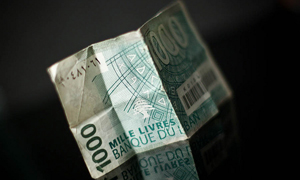Lebanon of 2011: Seizing a Timely Opportunity
The Lebanese economy reported a net slowdown in activity over the first half of 2011, yet without falling into a recessionary trap and avoiding negative growth.

A net slowdown in economic activity over the first half-year: Amid growing domestic political bickering and adverse regional spillover effects, the IMF revised down Lebanon‘s real GDP growth forecast for 2011 to 2.5%, against 7.5% in 2010. The domestic consumption aggregate in the first half is assumed to have undergone a decline in its growth, but remains more resilient on the whole than the behavior of investment at large. The investment aggregate was indeed the most adversely affected, as investors turned into a wait-and-see mode in the midst of domestic and regional uncertainties.
… the IMF revised down Lebanon’s real GDP growth forecast for 2011 to 2.5%, against 7.5% in 2010.
Foreign sector adversely impacted by domestic sluggishness and external conditions: Amid a relative slowdown in some regional recipient countries due to the political unrest, Lebanese exports stagnated over the first half-year while imports grew by 7.6% year-to date. As such, following a two-digit growth in Lebanon’s trade deficit triggered by the rise in global commodity and food prices this year, the issue of foreign constraint comes back to the fore. In parallel, financial inflows are estimated to have contracted by 15% on a net basis, the balance of payments reporting a deficit of US$ 0.5 billion in the first half.
Deterioration in the fiscal account along with stable indebtedness: The rise in government expenditures year-todate combined with stagnant revenues amid economic slowdown resulted in a substantial rise in the overall fiscal deficit and an important reduction in the primary surplus over the early months of the year. Public debt yet stabilized over the first five months of 2011, with the state resorting to its creditor accounts to finance its growing budget deficit.
Balanced exchange market after net LP-to-FC conversions: Monetary conditions in Lebanon were marked by net conversions in favor of foreign currencies this year prior to the trend reversal that resulted from the renewal of BDL governor’s term. On the overall, the first half-year monetary situation was marked by a moderate decline in the Central Bank’s foreign currency reserves, noticeable contraction in LP money supply, and slight drops in LP Treasury bills and Certificates of Deposits portfolios.
Satisfactory banking activity despite tough operating conditions: Measured by total assets of banks in Lebanon, domestic banking activity grew by 5.0% since the beginning of the year to reach US$ 135.4 billion at end-June 2011. This first half year’s performance, driven again by customer deposits, proved somewhat similar to that of the corresponding period of 2010 which saw a 5.6% activity growth. The subsequently available liquidity allowed banks to extend new waves of loans, amounting to US$ 2.3 billion year-to-date, relatively lower than the year before, amid an overall resilient consumption demand and a contracting investment demand.
Capital markets sluggish amid investor cautiousness: The local and regional overall conditions have had adverse repercussions on Lebanese capital markets’ activity during the first half of 2011, triggering drops in equity and bond prices, a relatively low level of BSE turnover ratio, and a relative expansion in the CDS and average bond spreads. The stock market price index dropped by 11% over the first half in a market that still lacks efficiency and liquidity, while bond spreads expanded by 91 basis points amid foreign selloffs and domestic buying.
Hopes for a better second half-year: While economic conditions in the first half of 2011 were adversely impacted by the regional turmoil’s indirect spillover effects on the Lebanese economy as well as adverse effects of growing domestic political bickering, the economic picture of the second half-year might prove to be somewhat different. Yet, Lebanon is still facing considerable political, economic and social challenges amid atypical domestic conditions lying ahead.
The article above has been published as a part of Bank Audi`s Lebanon Economic Report, Second Quarter of 2011. It can be accessed via Internet at the following web address : http://www.banqueaudi.com
Picture credit – Pictures of Money; http://www.picturesofmoney.org/